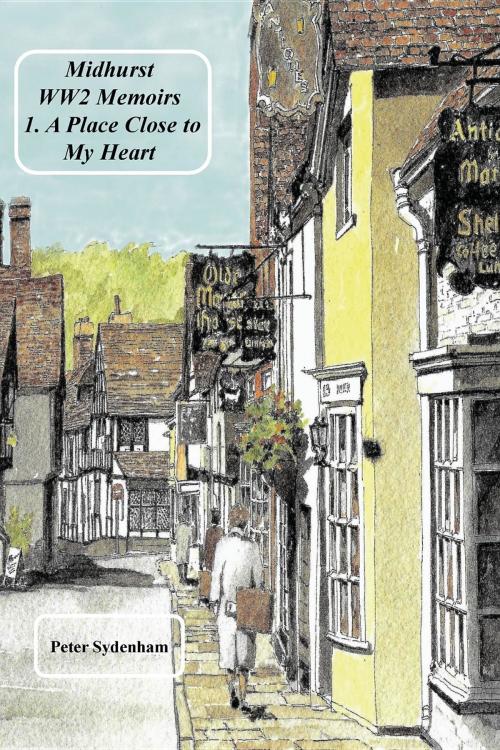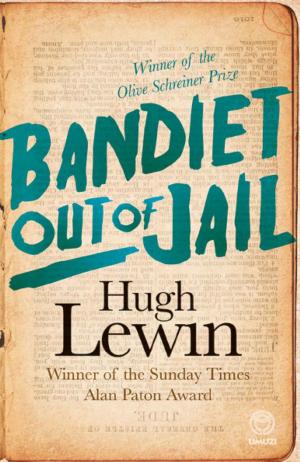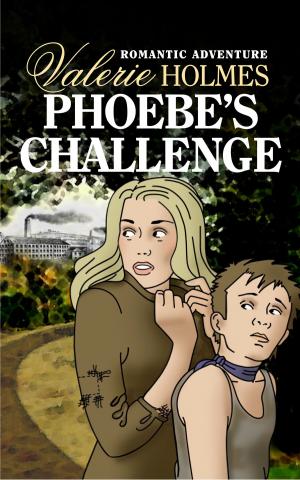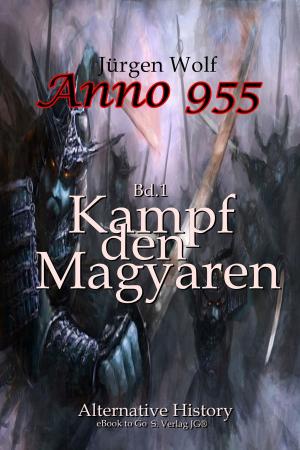Midhurst WW2 Memoirs
1. A Place Dear to My Heart
Nonfiction, History, British, Biography & Memoir, Historical| Author: | Peter H Sydenham | ISBN: | 9780648171324 |
| Publisher: | Red Robin Publishing Pty Ltd | Publication: | April 1, 2018 |
| Imprint: | Red Robin Publishing Pty Ltd | Language: | English |
| Author: | Peter H Sydenham |
| ISBN: | 9780648171324 |
| Publisher: | Red Robin Publishing Pty Ltd |
| Publication: | April 1, 2018 |
| Imprint: | Red Robin Publishing Pty Ltd |
| Language: | English |
A region of picturesque and sylvan beauty that I have never seen equalled.’ - Benjamin Disraeli. 1870.
By British standards, Midhurst in West Sussex, was always a sleepy town, becoming that way due to its enviable geographical position in the midst of the award winning rural countryside of the South Downs National Park.
WW2 activity filled it to capacity with troops from Canada, USA and those European Countries over-run by Hitler. To make matters even more onerous for its sleepy residents, hundreds of child evacuees were sent there from London to be safe from the bombing blitz on London by mad-man Hitler’s Air Force. Every school and run-down living space was pressed beyond capacity.
The Commando, led by Lord Lovat, had an HQ there to develop its raids into German held territories. The Royal Navy hid a small 'secret' airfield in the Cowdray Estate. Special Operations Executive agents were accommodated there before they were flown into and out of Europe.
In the 30s, before the war began, the German Ambassador, Von Ribbentrop, often visited there once telling it around that he would soon be the King of Cornwall, and that Hitler already had his eye on a local Midhurst District estate to be his English home when they invaded. Such forgotten stories are many.
This series of books uses the author's childhood formative experiences, there as an evacuee from London, as the story-line on which are stacked many back stories of the Midhurst District’s life and times.
In readiness for appreciating the war time memoirs that follow, this first book delves into the Midhurst Rural District area’s 1000-year-old history.
Having a colourful family history with bare fist pugilist boxers on one branch and landed West Country Gentry in the other it seemed to be of interest to overview that family history of the writer.
Midhurst has been given many awards and gained numerous testimonials as to its welcoming aura as ’a place to be’. How it escaped becoming a commuter town, and thereby retaining its bygones charms, is explained.
Midhurst began as a small Saxon market town taken over by the Norman Bohun family. They built a minor Norman castle on the highest hill overlooking the Midhurst river plain. That castle was eventually abandoned when the Bohun family built the then magnificent Tudor Cowdray Hall, now lost after it burned to the ground in the late 19th century.
As the major land-owners until this day, the Cowdray estate dynasties have always dominated the local Midhurst District. Their staunch adherence to Catholicism following the Reformation made for some unique and interesting history. The Anglican Church, with its numerous small parishes carried on their key role in guiding the moral and living aspects of the rural population of a few thousand souls.
This book explores the provision of education and health services; canal, rail, car and airplane transport, including the interesting time when Midhurst had a canal route to London, and three, now gone, railway stations of its own.
Two highlight biographic studies of the 1930s are those of a very poor boy living in the medieval part of town, and of the very wealthy, philanthropic, Vicar of Midhurst.
How the District dealt with improving the lot of the poor in the 17th and 18th centuries makes fascinating reading about the workings of a supported migrant scheme to Canada, and of the local Budgenor work house.
To tail out the author tells why he feels he was so lucky to have been sent there during WW2.
Extensive research and scholarly professionalism by Peter Sydenham integrates a surprising amount of ‘all but lost’ material, showing its place in helping win that war and how ‘it is a place to be’. You will enjoy learning about the Midhurst District and its WW2 endurance.
A region of picturesque and sylvan beauty that I have never seen equalled.’ - Benjamin Disraeli. 1870.
By British standards, Midhurst in West Sussex, was always a sleepy town, becoming that way due to its enviable geographical position in the midst of the award winning rural countryside of the South Downs National Park.
WW2 activity filled it to capacity with troops from Canada, USA and those European Countries over-run by Hitler. To make matters even more onerous for its sleepy residents, hundreds of child evacuees were sent there from London to be safe from the bombing blitz on London by mad-man Hitler’s Air Force. Every school and run-down living space was pressed beyond capacity.
The Commando, led by Lord Lovat, had an HQ there to develop its raids into German held territories. The Royal Navy hid a small 'secret' airfield in the Cowdray Estate. Special Operations Executive agents were accommodated there before they were flown into and out of Europe.
In the 30s, before the war began, the German Ambassador, Von Ribbentrop, often visited there once telling it around that he would soon be the King of Cornwall, and that Hitler already had his eye on a local Midhurst District estate to be his English home when they invaded. Such forgotten stories are many.
This series of books uses the author's childhood formative experiences, there as an evacuee from London, as the story-line on which are stacked many back stories of the Midhurst District’s life and times.
In readiness for appreciating the war time memoirs that follow, this first book delves into the Midhurst Rural District area’s 1000-year-old history.
Having a colourful family history with bare fist pugilist boxers on one branch and landed West Country Gentry in the other it seemed to be of interest to overview that family history of the writer.
Midhurst has been given many awards and gained numerous testimonials as to its welcoming aura as ’a place to be’. How it escaped becoming a commuter town, and thereby retaining its bygones charms, is explained.
Midhurst began as a small Saxon market town taken over by the Norman Bohun family. They built a minor Norman castle on the highest hill overlooking the Midhurst river plain. That castle was eventually abandoned when the Bohun family built the then magnificent Tudor Cowdray Hall, now lost after it burned to the ground in the late 19th century.
As the major land-owners until this day, the Cowdray estate dynasties have always dominated the local Midhurst District. Their staunch adherence to Catholicism following the Reformation made for some unique and interesting history. The Anglican Church, with its numerous small parishes carried on their key role in guiding the moral and living aspects of the rural population of a few thousand souls.
This book explores the provision of education and health services; canal, rail, car and airplane transport, including the interesting time when Midhurst had a canal route to London, and three, now gone, railway stations of its own.
Two highlight biographic studies of the 1930s are those of a very poor boy living in the medieval part of town, and of the very wealthy, philanthropic, Vicar of Midhurst.
How the District dealt with improving the lot of the poor in the 17th and 18th centuries makes fascinating reading about the workings of a supported migrant scheme to Canada, and of the local Budgenor work house.
To tail out the author tells why he feels he was so lucky to have been sent there during WW2.
Extensive research and scholarly professionalism by Peter Sydenham integrates a surprising amount of ‘all but lost’ material, showing its place in helping win that war and how ‘it is a place to be’. You will enjoy learning about the Midhurst District and its WW2 endurance.















